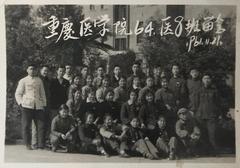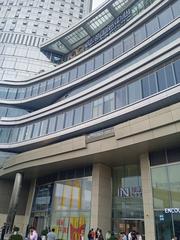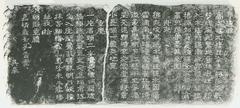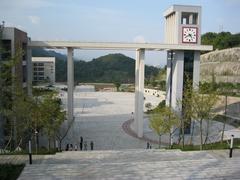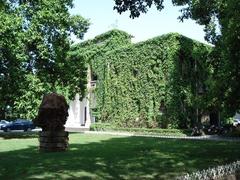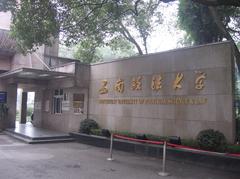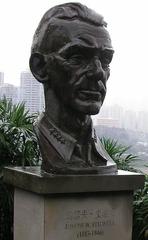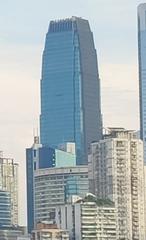G93 Chengyu Ring Expressway Chongqing: Visiting Hours, Tickets, and Travel Guide
Date: 14/06/2025
Introduction
The G93 Chengyu Ring Expressway (成渝地区环线高速公路) serves as a monumental transportation loop encircling the bustling metropolitan regions of Chongqing and Chengdu in southwestern China. Spanning approximately 1,057 kilometers, the G93 is much more than a vital infrastructure project—it is a transformative corridor for economic integration, urban expansion, and cultural exchange within the Chengdu-Chongqing Economic Circle. Conceptualized in the early 2010s and incorporating highway segments built since the 1990s, the expressway seamlessly links cities, industrial zones, and scenic attractions, shaping the region’s modern landscape (Wikipedia).
Besides overcoming formidable engineering challenges through the construction of extensive tunnels and bridges, the G93 provides travelers with unparalleled access to cultural, historical, and natural sites. Iconic attractions such as the Giant Panda Breeding Research Base in Chengdu, the Leshan Giant Buddha, and Baidi Fortress in Fengjie (Chongqing) are all within easy reach from the expressway.
This guide presents a detailed overview of the G93’s origins, construction milestones, strategic significance, and practical travel advice. Whether you’re a local commuter or a first-time visitor, you’ll find tips, highlights, and essential information for making the most of your journey on the G93 (Seetao; Wegenwiki; Springer).
Table of Contents
- Introduction
- History and Development
- Construction Timeline and Engineering Highlights
- Strategic Importance and Regional Impact
- Urbanization and Infrastructure Transformation
- Travel Tips and Visitor Information
- Major Attractions Accessible via G93
- Baidi Fortress: A Highlight Along the G93
- Ongoing Developments and Future Plans
- Frequently Asked Questions (FAQ)
- Conclusion
- References and Further Reading
History and Development
The G93 derives its name from the abbreviations for Chengdu (“Cheng”) and Chongqing (“Yu”). While its vision as a unified ring road emerged in the early 2010s, many of its segments originated as provincial highways or parts of China’s national expressway system decades earlier. Construction of key stretches began in the late 1990s, such as the Chengdu–Mianyang and Ya’an–Chengdu segments (originally part of the Jingkun Expressway, G5). In Chongqing, the G85 and G5001 were integrated into the ring (Wikipedia; Wegenwiki).
Construction Timeline and Engineering Highlights
Major expansion of the G93 occurred between 2010 and 2013, culminating in the completion of the full loop after the Leshan–Ya’an section opened in September 2013 (Wegenwiki). Rather than being a single continuous highway, the G93 functions as a network of interconnected expressways. Ongoing enhancements, such as the 2019 widening of the Chongqing section and multi-billion-yuan investments in upgrades, reflect its evolving capacity and importance (Seetao; Seetao).
The expressway features sophisticated engineering to negotiate mountainous terrain—incorporating numerous long tunnels and over 43 kilometers of bridges in the Chongqing area alone. Roadway standards vary from two-way eight-lane to four- or six-lane designs depending on demand. The G93 has received distinctions as a “Typical Demonstration Road” and “Science and Technology Demonstration Road” by the Ministry of Transport (CQCICO).
Strategic Importance and Regional Impact
The G93 is central to the Chengdu–Chongqing Economic Circle, a key driver of China’s regional integration strategy. It connects cities including Chengdu, Chongqing, Mianyang, Ya’an, Suining, and Leshan, supporting the flow of goods and people, reducing travel times, and promoting the development of satellite cities. The expressway also strengthens links to the Belt and Road Initiative and integrates with other major expressways such as G42, G50, and G85 (Wikipedia; Seetao; Wegenwiki).
Urbanization and Infrastructure Transformation
In Chongqing, the G93 forms the backbone of the “Dual Ring and Eight Rays” expressway system, catalyzing the expansion of urban, industrial, and residential zones beyond the city core (CQCICO). The removal of inner ring toll stations has streamlined travel, marking a shift into a “second loop era” for intra- and intercity mobility. The expressway has stimulated the development of new districts—such as the Chongqing Hi-Tech Zone and the new airport area—while infrastructure like the Shuitu Jialing River Bridge and Taihong Yangtze River Bridge exemplifies engineering innovation (Seetao; CQCICO).
Travel Tips and Visitor Information
- Access: The G93 is a public toll expressway, open 24/7 to all vehicles. No tickets or visiting hours apply, but toll fees are charged based on vehicle type and distance.
- Navigation: Bilingual signage (Chinese and English) is prevalent, and GPS navigation is recommended, especially in mountainous or congested sections.
- Rest Areas: Numerous service areas offer fuel, dining, restrooms, and shops, making long journeys comfortable.
- Toll Payment: Toll cards and electronic toll collection (ETC) are accepted. Cash can be used at manual booths.
- Driving Tips: Peak traffic is common during holidays. Some mountainous stretches are prone to fog or snow in winter—check weather reports before traveling.
- Public Transport: High-speed trains and buses connect cities along the G93. Shuttle services and taxis are available at major interchanges.
Major Attractions Accessible via G93
The G93 provides convenient access to some of southwestern China’s most celebrated destinations:
- Chengdu: Giant Panda Breeding Research Base, Wuhou Shrine, and teahouse culture.
- Chongqing: Urban skyline, Dazu Rock Carvings, Hongyadong, and spicy hotpot.
- Leshan: Leshan Giant Buddha (UNESCO World Heritage site).
- Ya’an: Qingcheng Mountain and Dujiangyan Irrigation System.
Other notable stops include Ciqikou Ancient Town, the Three Gorges Museum, and the Great Rift Valley Scenic Area. Rest areas near these attractions often feature local specialties and tourist information.
Baidi Fortress: A Highlight Along the G93
Overview
Baidi Fortress (White Emperor City), situated in Fengjie County at the gateway to the Qutang Gorge, is a historic fortress renowned for its cultural and scenic significance. Overlooking dramatic river vistas, the fortress is famously linked to the legends of Liu Bei and celebrated in Chinese poetry (Seetaoe).
Visitor Information
- Opening Hours: 8:00 AM – 6:00 PM daily
- Ticket Prices: Adults 80 CNY; students and seniors 40 CNY; children under 1.2 meters free
- Getting There: Access via the G93 to Fengjie, followed by local roads or Yangtze River cruises; public buses and taxis are available.
- Facilities: Onsite ticketing, guided tours (in Mandarin and English), ramps for partial accessibility, parking near the entrance
- Nearby Attractions: Qutang Gorge, Fengjie Old Town, Yangtze River cruises
Tips
- Visit in spring or autumn for optimal weather.
- Wear sturdy shoes for uneven terrain.
- Photography is encouraged; bring water and sun protection in summer.
- Guided tours enhance the historical experience, but self-guided visits are possible.
Ongoing Developments and Future Plans
Continual upgrades are in progress to accommodate rising traffic volumes. Projects include expanding certain segments to eight lanes, constructing new interchanges, and upgrading service areas. Integration with high-speed rail and airports is shaping the G93 into a backbone for multi-modal transport in western China (Seetao).
Frequently Asked Questions (FAQ)
Q1: Do I need to pay tolls to use the G93?
A1: Yes, tolls are charged based on vehicle type and distance. ETC and cash are accepted.
Q2: Are there 24/7 rest areas?
A2: Most rest areas are open at all hours, but some amenities may have limited hours.
Q3: Is the G93 a continuous loop?
A3: It operates as a network of interconnected expressways, forming a functional ring but not always as a seamless road.
Q4: Can tourists drive on the G93 with a foreign license?
A4: Foreigners require a valid Chinese driving permit to operate vehicles on Chinese expressways.
Q5: What’s the best time for sightseeing along the G93?
A5: Spring and autumn offer pleasant weather and clear views.
Conclusion
The G93 Chengyu Ring Expressway is a catalyst for regional integration and economic growth, opening up southwestern China’s landscapes, heritage sites, and cultural richness. For travelers, it offers seamless access to iconic destinations, practical amenities, and a safe, modern driving experience. As the expressway continues to evolve, it remains a vital corridor for both commerce and adventure.
For real-time navigation, travel updates, and detailed guides, consider downloading the Audiala app or following official travel channels (Seetao; CQCICO).
References and Further Reading
- G93 Chengyu Ring Expressway, Wikipedia
- Chengyu Ring Expressway, Wegenwiki
- G93 Expressway Construction Updates, Seetao
- Springer: Regional Transportation and Economic Integration
- Urban Infrastructure Development, CQCICO
- G93 Expressway Travel Tips, Seetao
- Visiting Baidi Fortress, Audiala Travel Guides
- Wikiwand: G93 Chengyu Ring Expressway
- Adventure Tour China: Mianyang Tourist Guide
- ichongqing.info: Guide to Sichuan-Chongqing Expressways

